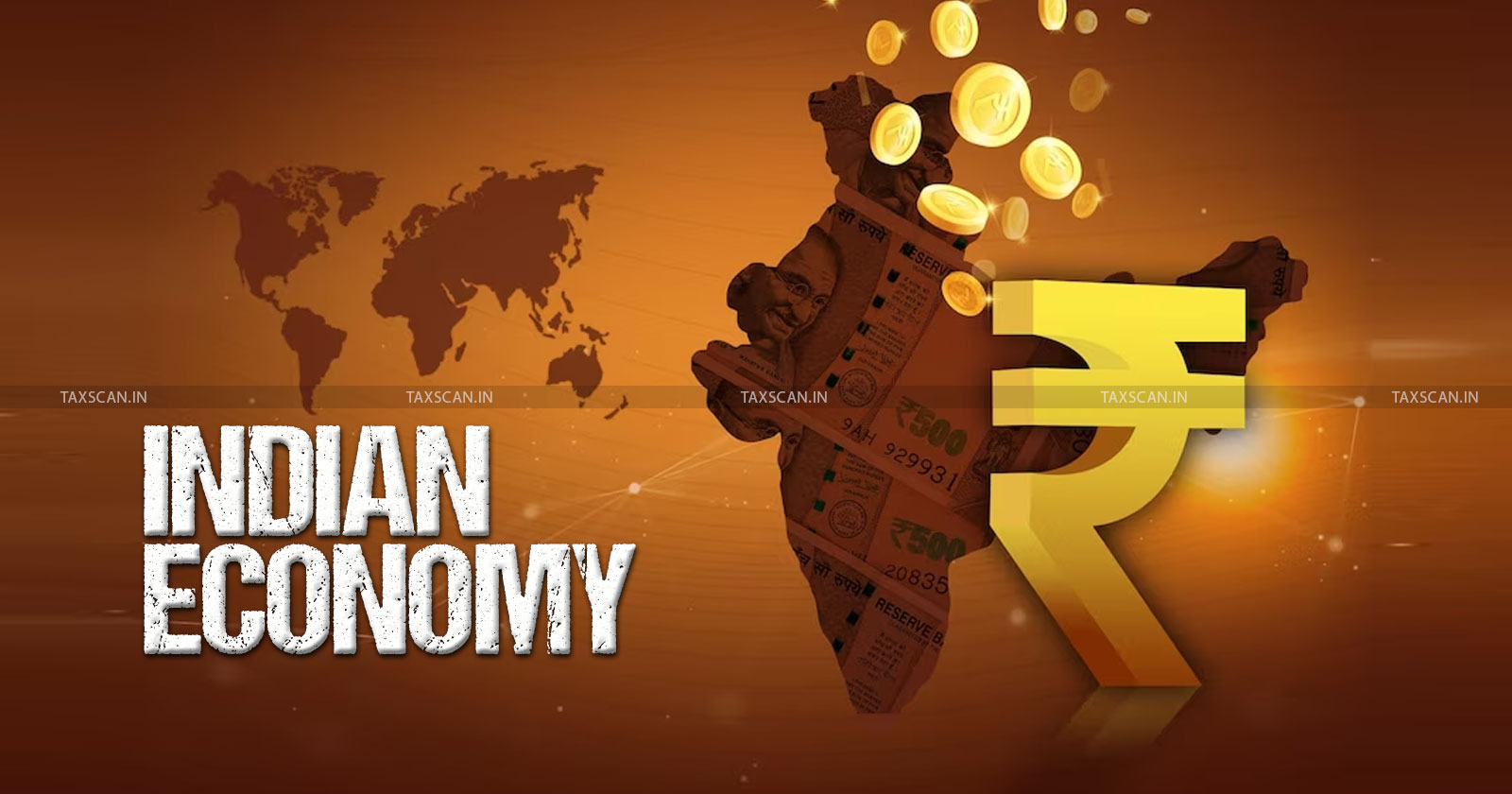Charting the Course for Indian Economy’s Inevitable Road to a Cashless Future

Indian Economy – Cashless Future – digital age – TAXSCAN
Indian Economy – Cashless Future – digital age – TAXSCAN
The advent of technology and the digital age has paved the way for significant changes in various aspects of our lives, and one such transformative shift is the move towards a cashless economy.This paradigm shift holds immense importance in the contemporary world, offering numerous benefits and opportunities for individuals, businesses, and nations.
The widespread preference for cash transactions in small to marginal value transactions is deeply ingrained in societal and individual practices. This reliance on cash is influenced by various factors such as the presence of a large informal sector, limited access to digital banking facilities, cost considerations, and mental blocks related to digital transactions. However, the need for a cashless economy is imperative for national interests, promoting economic consolidation, productivity, progress, harmony, and security.
While the efforts to transition to a cashless economy might face resistance due to societal and individual habits, promoting a cashless economy aligns with national interests, enhancing economic efficiency, transparency, and security. The government's efforts to incentivize digital transactions play a crucial role in steering the nation toward a more resilient and technologically advanced financial ecosystem.
The forefront of digital payment innovations and financial inclusion in India is led by the government and regulators. The Indian payment industry stands out, exhibiting above-average growth in non-cash payments. In 2014, the Prime Minister initiated the financial inclusion campaign (PMJDY: Pradhan Mantri Jandhan Yojana), resulting in 125 million accounts within six months. Furthermore, the RBI introduced guidelines for differentiated banks, aiming to enhance financial access for migrant workers, low-income households, small businesses, and underserved sectors, with more than ten institutions receiving 'in principle' approval.
These initiatives have driven the widespread adoption of electronic payments, with mobile banking transactions tripling between 2012 and 2014, reaching 150 million in 2014. Mobile-wallet transactions surpassed mobile banking transactions, attracting growing interest from consumers and motivating banks to invest in their digital payment offerings.
The demonetization of currency notes in 2016 served as a catalyst for payment processing firms and fintech companies to penetrate the market. The growth trajectory of digital payments is expected to persist, with potential pushes from the rural economy and small and medium-sized enterprises (SME) sector. Government incentives, like discounts on digital GST payments and accelerator programs, will contribute to this momentum. Specific use cases in business-to-business (B2B) payments, Electronic Clearance Service (ECS) mandates, equated monthly installments (EMIs), and person-to-government payments (P2G) in smart cities are likely to impact transaction volume positively in the future.
New age instruments such as Unified Payments Interface (UPI), prepaid payment instruments (PPIs), Aadhaar Enabled Payment System (AEPS), along with established ones like National Electronic Fund Transfer (NEFT), Real-Time Gross Settlement (RTGS), Immediate Payment Service (IMPS), and cards have witnessed phenomenal growth. The government's emphasis on using Aadhaar for transaction authentication over micro ATMs and banking correspondent outlets fueled the growth of AEPS.
In the offline space, acquiring banks have deployed nearly 29 lakh PoS terminals, attracting UPI and PPI players to develop innovative solutions for large merchant outlets, micro-merchants, and cash-on-delivery payment facilitators. Interoperability, a significant change in the payments landscape, is evident with UPI allowing transfers between 55 banks independently of the acquirer payment service provider mobile app. The Bharat Bill Payment System (BBPS), Bharat QR, and interoperability guidelines for PPI players further promote seamless, secure, and interoperable payments.
To transition from traditional cash-based transactions to electronic transactions and digital money, the Indian government has also made certain changes in the Income-tax Act, 1961 as well. These measures aim to optimize and monitor cash transactions, counteract money laundering, tax evasion, and other financial crimes, and encourage transparent business practices. Compulsory filing of income tax returns, taxes deducted at source (TDS) on cash, mandated acceptance of electronic payment modes, restrictions on cash transactions in real estate, and promoting cashless transactions in the agriculture sector are part of such measures.
The Income Tax Act includes provisions like Section 269SS, which restricts accepting cash loans or deposits exceeding Rs. 20,000, and Section 269T, which regulates the repayment of loans or deposits in cash. Penalties are imposed under Section 271E for non-compliance with these provisions.
Other sections like 40A(3) disallow expenses incurred in cash, 40A(3A) deems income for expenditure paid in cash, and 80D(28) encourages deductions for health insurance premiums paid through non-cash modes. Additionally, deductions under Section 80GGB for political contributions and 80JJAA for additional employee costs are only allowed for non-cash payments.
India's progression towards a cashless society is predominantly steered by the rapid expansion of UPI.In the first quarter of FY 2023–24, the transaction volume had reached 24.9 billion, with a transaction value of INR 39.7 trillion. As of May 2023, UPI accounted for more than 78% of total retail digital payments, and projections indicate a potential contribution of 90% by FY 2026–2027. Initially established in FY 2016–2017 for small transactions, UPI has evolved into a platform for real-time cross-border payments, even substituting traditional ATM cash withdrawals. With UPI extending its reach internationally through partnerships with countries like France, Singapore, the United States, Australia, Canada, Hong Kong, Oman, Qatar, Saudi Arabia, the United Arab Emirates, and the United Kingdom, the Indian government aims to garner support from all G20 nations for worldwide UPI-based payments. The recent collaboration with France and the RBI's announcement allowing eligible travellers from G20 nations to access UPI in India further exemplify UPI's global aspirations.
The concerted efforts of the RBI and NPCI in fostering innovation and fortifying the existing framework have led to widespread UPI adoption, boasting approximately 260 million users in India. NPCI's robust technology stack and extensive network of Payment Service Providers (PSPs) contribute to making UPI one of the safest and most secure global payment methods.
The enhancement of India's road infrastructure, coupled with the National Electronic Toll Collection (NETC) scheme utilizing FASTags, has significantly contributed to the nationwide adoption of digital transactions. In FY 2021–22, NETC transactions witnessed an 84% Year on Year(YoY) rise, amounting to 2.4 billion transactions worth INR 380.8 billion. The first quarter figures for FY 2023–24 indicate 0.96 billion transactions with a transaction value of INR 0.16 trillion. The anticipated 23% compound annual growth rate (CAGR) in transaction volume and 26% CAGR in transaction values over the next five years underscore the potential growth in digital payments.
Beyond toll collection, NETC FASTags have found applications in parking, and their potential role in commercial fleet management is being explored. The introduction of a GPS-based toll collection system is set to further streamline toll collection, providing a seamless experience for road travellers.
While credit card transactions witnessed a remarkable 30% YoY increase in FY 2022–23, with transaction values rising by 47%, debit card transactions experienced a decline. In FY 2023–24, credit card transactions in the first quarter reached 0.79 billion with a value of INR 4.10 trillion, surpassing debit card transactions in both volume and value. The ongoing shift towards credit cards is attributed to features such as a 30-45 day interest-free credit period, cashback, reward points, and various savings opportunities. Innovations like contactless cards and UPI on credit cards, combined with widespread acceptance, further propel the growth of credit card transactions.
Conclusion
A cashless economy enhances transactional efficiency and convenience. Digital payment methods, such as mobile wallets, online banking, and contactless cards, enable swift and hassle-free transactions. Individuals can make payments, transfer funds, and conduct financial transactions with a few taps on their smartphones.The transition to a cashless economy also promotes financial inclusion by providing access to formal financial services for previously underserved populations. Digital payment platforms offer a gateway for individuals without traditional banking access to participate in the formal financial system.Reducing cash transactions offers several benefits such as combating financial crimes, preventing corruption and terrorism, promoting transparent business practices, and easing audits. By incentivizing cashless transactions through tax deductions, the government aims to align economic actions with national needs, increase tax revenues, and enhance financial tracking capabilities.
Digital transactions leave a traceable electronic trail, fostering transparency and accountability. This feature is particularly crucial in curbing corruption, preventing money laundering, and enhancing financial integrity. Governments can track and monitor financial transactions more effectively in a cashless economy.
The transition to a cashless economy paves the way for innovative financial services and products. Fintech solutions, such as peer-to-peer lending, robo-advisors, and blockchain-based financial instruments, emerge as viable alternatives, fostering financial innovation and inclusion.As the world becomes increasingly interconnected, transitioning to a cashless economy aligns with global trends. Many developed and developing nations have embraced digital payment ecosystems, creating a more interconnected and interoperable global financial landscape.
As we chart the course for the cashless future, it becomes evident that the resilience and adaptability of the Indian economy are key drivers of this transformation. The collaborative efforts between the government, the RBI and financial institutions. Looking ahead, the focus should remain on addressing challenges, fostering financial literacy, and ensuring the inclusivity of every citizen on this inevitable journey towards a cashless India. The dividends of this evolution promise not only economic efficiency but also a more secure, transparent, and accessible financial ecosystem for the future.
Support our journalism by subscribing to Taxscan premium. Follow us on Telegram for quick updates


